Last Updated on 02/04/2024 by Andrew X
From ancient tales etched into stone to the mysterious blips on modern-day EMF detectors. Human history is laced with a deep-rooted belief in the inexplicable and supernatural. The paranormal, a concept as elusive as the phenomena it encompasses, has captivated generations, spawning countless theories, investigations, and superstitions. But what does the history of the paranormal reveal about us and our understanding of the world beyond the mundane? In this exploration, we’ll journey through time and space, examining the earliest paranormal events to be recorded.
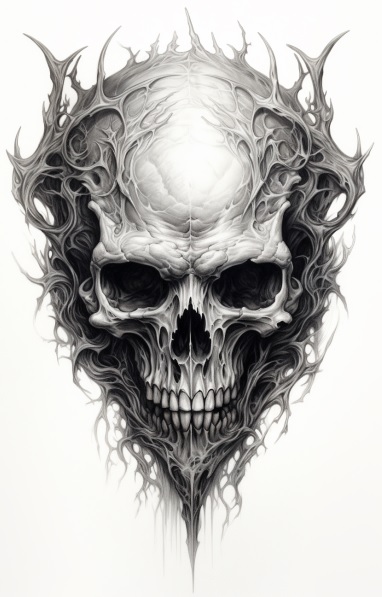
Defining the Paranormal: Beyond the Natural Order
The term ‘paranormal’ suggests occurrences that defy explanation under currently accepted scientific theories. It is a wide umbrella that shelters an array of phenomena such as telekinesis, telepathy, precognition, and hauntings, just to name a few. The paranormal intrigues us because it challenges the boundaries of what we consider to be ‘normal.’
But how far back does our fascination with the paranormal reach? Believe it or not, visions of the unexplained trace back to some of the earliest civilizations. A mix of ignorance and spirituality sowed the seeds for tales of gods and demons interacting with humankind. These communal beliefs, once the cornerstone of societal structure, often gave rise to rituals, religions, and mythologies that are as much a part of our collective identity as the blood that runs through our veins.
The Dawn of the Paranormal: Earliest Recorded Events
The earliest narratives of paranormal events are predominantly found in religious texts, cave art, and oral traditions that acted as ancient newsfeeds. They varied between cultures, but a common thread often wove through them — supernatural beings communicating with or influencing mortals.
In Mesopotamian and Egyptian lore, for example, we find accounts of deities directly intervening in human affairs. The Sumerian ‘Epic of Gilgamesh’ tells of an immortal man, Utnapishtim, who survived a deluge that wiped out the rest of the world. A narrative that mirrors the biblical tale of Noah. Meanwhile, the Egyptian “Book of the Dead” offered guidance to souls navigating the afterlife. A realm fraught with peril and overseen by whimsical gods.
Although considered fantastical by present-day standards, the ancients regarded these accounts with utmost seriousness. Providing explanations for celestial events, natural disasters, and the machinations of fate.
The Earliest Paranormal Beliefs & Events Recorded On Cuneiform Tablets
Irving Finkel is a renowned English philologist and Assyriologist, serving as the Assistant Keeper of Ancient Mesopotamian script, languages, and cultures at the British Museum. His expertise covers a range of subjects within Assyriology, particularly ancient Mesopotamian medicine, magic, religion, and literature.
Dr. Finkel has made significant contributions to the understanding and interpretation of cuneiform text, One of the earliest systems of writing. Beyond his academic work, he is known for engaging with the public through lectures and videos about Mesopotamian ghostbusting. He reveals how people in ancient times dealt with encounters with the supernatural. He is also an accomplished author. His book “The First Ghosts” is one of his notable titles that delve into the history of ancient ghosts and ghost stories.
In this video, Irving Finkel shares his research into the very first ghost stories recorded in history.
The Earliest Paranormal Beliefs Recorded In Cuneiform
Irving Finkel’s work reveals that ancient text, known as “cuneiform” reveals an ancient past from around 4000 years ago, filled with what the ancient people believed to be paranormal events and supernatural entities.
Cuneiform writing emerged in ancient Mesopotamia around 3200 BCE. It is believed that the writing was initially created as a way to keep track of business transactions and daily record-keeping. As time passed, more daily events and activities were recorded, revealing spiritual events and practices.
During this time, according to the ancient writing, ghost sightings were a regular occurrence. There was no question about the existence of supernatural beings. The Sumerians, Assyrians, Akkadians, and Babylonians all believed in Gods, Ghosts, and Demons. The Gods were the ones who looked over the people. Ghosts were seen as dead people or relatives that had returned from “the underworld”. On the other hand, demonic entities aimed primarily to inflict harm and suffering.
An example of Cuneiform Text
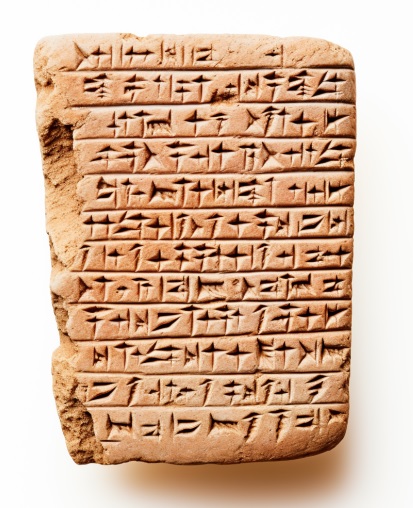
The Shamans and Seers
Shamanism, one of the oldest spiritual practices, often involved a shaman who could enter a trance state to converse with the spirit world. Their visions and prophecies were sought after by their tribes, shaping important decisions and moral codes.
Shamanism can be traced to multiple native groups and isn’t so much a set religion as a diverse tapestry of spiritual customs and practices. These customs revolve around a figure known as the shaman, a vital intermediary believed to connect with and command the spirit realm.
Early human civilizations dabbled in what would come to be known as the shamanic techniques. Modern research uncovered through ancient art appears to depict shamans “shape-shifting” and taking on animal forms or otherworldly transformations.
Shamans would fulfil several roles: they are both mortal and mystical, serving as healers, messengers between entities, and custodians of cultural lore.
To connect with these unseen forces, shamans would employ a range of spiritual practices, from chanting to fasting. Each is meant to alter their consciousness and facilitate what can only be described as a spiritual journey. In traversing these metaphysical spaces, they claim guidance, knowledge and sometimes healing, for the lesser half of the community.
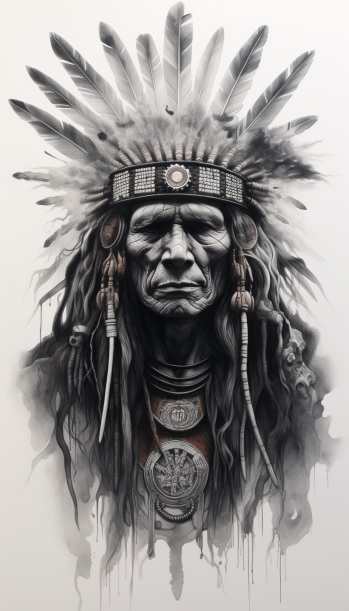
Sacred Sites and Rituals
The construction and use of megalithic structures around the world, from Stonehenge to the pyramids of Giza, are often ascribed a spiritual significance tied to the cosmos. These monuments, aligned with celestial events, likely served as both calendars and centres for spiritual events and practices.

Cave paintings featuring otherworldly beings might be the earliest form of ‘contact’ art. Implying a connection between the mundane and otherworldly dimensions.
The reasons for such depictions are as varied as the art itself. They could be a form of storytelling, religious devotion, or attempts to harness the power of these beings. One thing is for sure, these images show some of the earliest paranormal beliefs and events that are known to us.
The Trinity of Paranormal Belief: Religion, Myth, and Magic
Religious texts from different periods and cultures are replete with what we would class as paranormal experiences. The parting of the Red Sea in the Exodus, the virgin birth, the resurrection, and the miracles attributed to saints and prophets all fall under the paranormal umbrella. These events were not to be questioned but rather formed the pillars of belief systems.
The Birth of Myth
Mythology, or the storytelling elements of a culture, is often steeped in the supernatural. These tales not only entertained but also served as teaching tools. Passing on morality, explanations for natural phenomena, and lessons about the gods. The imagery of myth extends beyond the narratives themselves to architectural design, city planning, and the very fabric of societal structure. Myths were an integral part of life, and disbelief was not an option.
The Art of Magic
Before science could explain the mechanisms behind the world’s phenomena, magic bridged the gap between ignorance and understanding. In ancient societies, those deemed to possess magical abilities were often accorded both respect and fear. They were the sorcerers, witches, and wizards who could summon spirits and predict the future. Magic was intertwined with daily life, from the charms to protect newborns to the rituals offering guidance in crop sowing. Its power was prevalent and its mysteries kept the populace in awe and wonder.
How The Earliest Paranormal Beliefs Have Evolved Throughout History
In ancient times, nearly every culture had its pantheon of gods and goddesses, spirits, and demons. The world was imbued with magic, and supernatural entities were credited with controlling everything from the weather to the success of crops. For example, the Greeks attributed thunder to Zeus, while the Egyptians believed the flooding of the Nile was the work of Hapi, a river god.
Shamanism, as mentioned earlier, is one of the earliest examples of such practices, where shamans acted as intermediaries between the human and spirit worlds. These early beliefs were often animistic, meaning that all objects, places, and creatures possessed a distinct spiritual essence.
Middle Ages to the Enlightenment: From Religiosity to Rationality
With the rise of major world religions, the supernatural became more institutionalized. In the Middle Ages, Christianity, Islam, and other religions offered structured cosmologies, with angels, demons, and an afterlife becoming central to people’s understandings of the supernatural.
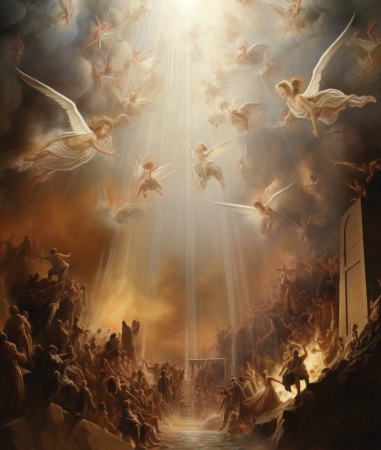
However, by the time of the Enlightenment, a shift toward rationalism and scientific inquiry began to change this perspective. The supernatural came under greater scrutiny, leading phenomena previously linked to the paranormal to be dismissed as folklore and superstition. This was a period of significant tension between religion and the emerging natural sciences.
The Victorian Era: Spiritualism and the Paranormal Reimagined
The Victorian era spanning from 1837 to 1901 under the reign of Queen Victoria saw a resurgence in the interest in the supernatural. Partly as a reaction against the materialism of the industrial age. Spiritualism emerged, with séances and mediums becoming popular as people sought to communicate with the dead. This period also saw the birth of the ghost story as a literary genre, reflecting the era’s fascination with death and the afterlife.
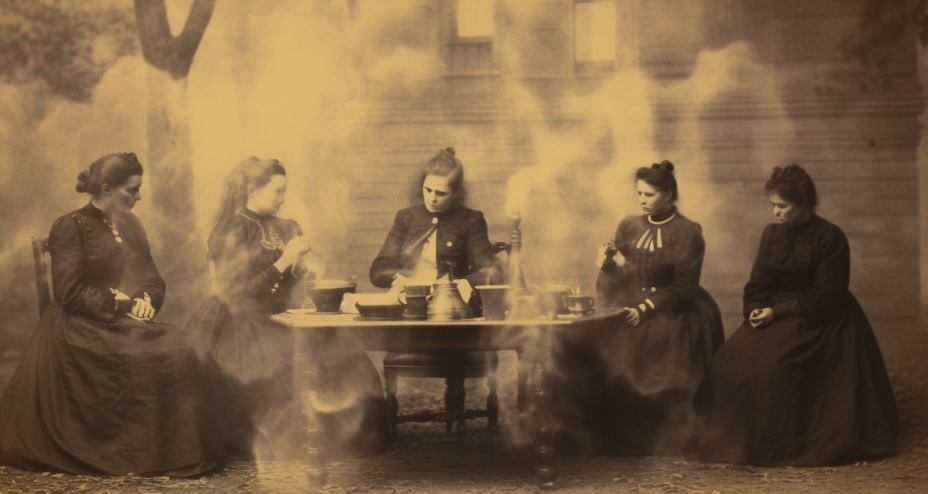
This period, characterized by its strict social norms and rapid industrial progress, witnessed a cultural counter-movement that embraced spiritualism and the supernatural. Victorians held séances in their parlours, seeking to communicate with the dead through mediums. Fueled by a desire to reconcile their religious beliefs with the era’s scientific advancements. The period also saw the rise of Gothic literature. With authors like Mary Shelley and Bram Stoker exploring themes of horror and the macabre.
Modern Times: A New Age of Belief
In the contemporary world, beliefs in the supernatural and paranormal have not waned, but they have transformed. The rise of the “New Age” movement in the late 20th century reintegrated a focus on spirituality, psychic phenomena, and the metaphysical into mainstream culture.
Simultaneously, the scientific community has made attempts to study paranormal beliefs and experiences systematically. Parapsychology, for example, endeavours to investigate claims of psychic phenomena using the scientific method. Although mainstream science often holds a sceptical view, there exists a significant portion of the population deeply intrigued by and firm in their belief in the existence of psychic abilities and other paranormal phenomena.
The advent of technology and the internet has also changed the landscape, allowing for the rapid spread of information (and misinformation) about supernatural occurrences. TV shows, movies, and online forums often explore paranormal themes. Both fictional and allegedly real events, keep the public’s interest alive.
The Evolution Of Supernatural Beliefs
The evolution of supernatural beliefs reflects broader changes in human understanding and experience. As our knowledge base expands and societal norms shift, so too do our interpretations of the unknown. Scientific advancement has often replaced supernatural explanations for natural phenomena. However, the mysteries of human consciousness and the potential for existence beyond physical life continue to elude definitive answers, leaving room for the supernatural in modern thought.
Parallel with scientific scepticism is a persistent human longing for connection. Whether it be spiritual, ancestral, or cosmic. This keeps these beliefs thriving in various forms. Belief in the paranormal satisfies deep psychological needs: to comprehend the incomprehensible, to feel a sense of control, and to maintain hope for something beyond our physical reality.
In essence, the earliest paranormal beliefs are a testament to the ever-evolving human condition, mirroring our quest for understanding, our grappling with the fear of the unknown, and our enduring fascination with the possibility of a world beyond what we can see and touch.
As we continue into the future, how will our supernatural beliefs further transform with new scientific discoveries and societal shifts? Only time will tell.
For now, the paranormal remains a signpost to the enigmatic. An opus of the unseen that will continue to capture our collective imagination and drive the relentless pursuit of understanding. Whether sceptic or believer, the allure of the unknown keeps the mysteries of the paranormal a beacon in our search for truth.
Post Your Thoughts And Comments
Would you like to share your thoughts regarding our post on the earliest Paranormal beliefs? Get in touch and share your thoughts with us in the section below!
An Opportunity To Create Your Own Online Business
Paranormal Global was established on the Wealthy Affiliate platform, which hosts an online community of individuals crafting impressive websites while generating passive income. If you would like to join us in creating something amazing for yourself, check out the link below. It’s free to get started!
More Posts From Paranormal Global
- The Power of the Mind: How Negative Emotions Can Draw Paranormal Activity
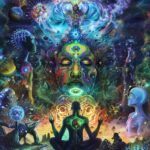 Last Updated on 04/06/2024 by Andrew X For many paranormal enthusiasts, the idea that our minds can influence supernatural occurrences is both intriguing and unsettling. In this post, we will delve into the… Read more: The Power of the Mind: How Negative Emotions Can Draw Paranormal Activity
Last Updated on 04/06/2024 by Andrew X For many paranormal enthusiasts, the idea that our minds can influence supernatural occurrences is both intriguing and unsettling. In this post, we will delve into the… Read more: The Power of the Mind: How Negative Emotions Can Draw Paranormal Activity - Encounter with the Supernatural: The Mysterious Haunting Of A Welsh Farmhouse
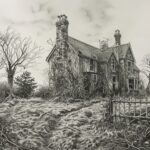 Last Updated on 04/06/2024 by Andrew X The tale I’m about to share still sends shivers down my spine. The most mundane nights can turn into restless ones because of these events. It… Read more: Encounter with the Supernatural: The Mysterious Haunting Of A Welsh Farmhouse
Last Updated on 04/06/2024 by Andrew X The tale I’m about to share still sends shivers down my spine. The most mundane nights can turn into restless ones because of these events. It… Read more: Encounter with the Supernatural: The Mysterious Haunting Of A Welsh Farmhouse - Rethinking Aliens: Could UFOs Be Time Travellers From Our Future?
 Last Updated on 25/04/2024 by Andrew X Throughout history, humanity has been captivated by the mysteries of the night sky. With tales of unidentified flying objects (UFOs) spanning cultures throughout time. Traditionally, these… Read more: Rethinking Aliens: Could UFOs Be Time Travellers From Our Future?
Last Updated on 25/04/2024 by Andrew X Throughout history, humanity has been captivated by the mysteries of the night sky. With tales of unidentified flying objects (UFOs) spanning cultures throughout time. Traditionally, these… Read more: Rethinking Aliens: Could UFOs Be Time Travellers From Our Future? - The Paulding Lights, Michigan – Explained or still a mystery?
 Last Updated on 17/04/2024 by Andrew X Nestled in the tranquil forests of Michigan’s Upper Peninsula, a mysterious glow has captured the imagination of locals and adventurers for decades. The enigmatic Paulding Lights.… Read more: The Paulding Lights, Michigan – Explained or still a mystery?
Last Updated on 17/04/2024 by Andrew X Nestled in the tranquil forests of Michigan’s Upper Peninsula, a mysterious glow has captured the imagination of locals and adventurers for decades. The enigmatic Paulding Lights.… Read more: The Paulding Lights, Michigan – Explained or still a mystery? - The Most Haunted Places In Cornwall, England
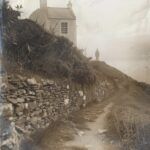 Last Updated on 09/04/2024 by Andrew X Cornwall, England. With its rugged coastlines and windswept moors, has long been a land shrouded in mystery and folklore. From pirates who once terrorized the seas… Read more: The Most Haunted Places In Cornwall, England
Last Updated on 09/04/2024 by Andrew X Cornwall, England. With its rugged coastlines and windswept moors, has long been a land shrouded in mystery and folklore. From pirates who once terrorized the seas… Read more: The Most Haunted Places In Cornwall, England - Jozef Pluta And The Possession Of Kamilka
 Last Updated on 02/04/2024 by Andrew X In 2022 Police were called to a small hut somewhere in Poland that had a previous history of criminal activity. Little did they know of the… Read more: Jozef Pluta And The Possession Of Kamilka
Last Updated on 02/04/2024 by Andrew X In 2022 Police were called to a small hut somewhere in Poland that had a previous history of criminal activity. Little did they know of the… Read more: Jozef Pluta And The Possession Of Kamilka
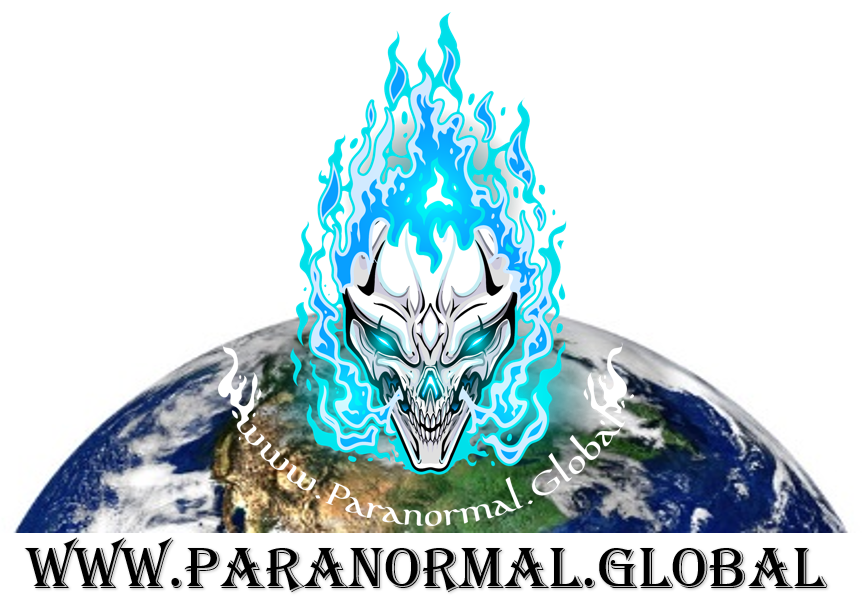

I enjoyed learning more about the history of the Paranormal. It was interesting to learn that the story of Egypt mirrors that of the Bible regarding the flood. I had no idea that ghost stories were written so long ago! I am a bit freaked out by the concept of demonic beings. I recently booked a Hotel in Bisbee, AZ- but then canceled after learning the Hotel has hauntings. The thought of possibly seeing something in my room made me too nervous.
We’re thrilled to hear about your interest in the history of the Paranormal, and it’s wonderful that you’ve uncovered intriguing connections like those between ancient Egypt and biblical stories.✨ Ghost stories indeed have a timeless appeal, reaching back into the depths of human history!
Concerning your experience with the hotel in Bisbee, AZ, your feelings are completely valid. The unknown can sometimes be unsettling, and it’s important to stay where you feel safe and comfortable. Though tales of hauntings can stir the imagination, remember they often stem more from folklore than fact. Although, I would be interested to learn more about the hotel that you were going to stay at. Perhaps we could look further into this hotel and cover it in a future post on our website?
Thank you for sharing your experience with us, It’s conversations like these that keep the captivating world of Paranormal history alive! 💖
Hello! Your article effectively highlights the trinity of paranormal belief encompassing religion, myth, and magic. It navigates through pivotal historical periods, such as the Middle Ages, Enlightenment, and Victorian era, showcasing how societal shifts influenced perceptions of the supernatural.
The inclusion of the Victorian era’s resurgence in spiritualism and the contemporary New Age movement adds layers to the narrative, emphasizing the enduring nature of humanity’s engagement with the paranormal.
A thought-provoking and comprehensive exploration of the mystical worlds that continue to captivate the human imagination. well done!
Thank you so much for your thoughtful and eloquent response! 🌟
Your appreciation for the depth and historical context of our article on the entwined relationship between religion, myth, and magic truly means the world to us. We’re over the moon to hear that the sections on the Victorian spiritualism resurgence and the contemporary New Age movement resonated with you.
Your comment not only brightens our day but also reinforces our commitment to delivering thought-provoking content. 📚 We’re incredibly grateful for the time you took to share your reflections with us and our readers. Stay tuned for more explorations into the enchanting realms of the paranormal!
Andrew